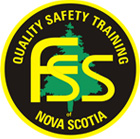Emergency Repairs
Hazards Identified
Traffic, fire, crushing, dust, flying debris, fluid drips, noise
Hazard-Specific Personal Protective Equipment
Retro-reflective clothing or vest, eye Protection, (and if required, hearing protection)
Hazard-Specific Training
Traffic Control Person and Temporary Workplace Signage (if required)
Safe Work Practice
- If possible, the mobile equipment needing repairs should be moved off the road, away from traffic.
- If the mobile equipment is stranded on the road, the Operator must assess the hazards and determine a safe way to warn the public of the hazard of the blockage of the road until such tie as the mobile equipment can be moved or repaired, and shall immediately implement this warning system.
- The Operator of the equipment needing repairs shall notify the Dispatcher, Operations Supervisor or other supervisor of the situation and the need for Traffic Control Persons and signing, if required, until the mobile equipment can be moved or repaired.
- Upon arrival at the location, the Mobile Service Mechanic or Operations Supervisor shall do a hazard assessment, including the need for Traffic Control Persons or signing while the mobile equipment is moved from the road or repaired.
- If possible and safe to do so, the service vehicle should be parked 3 to 10 metres behind the disabled vehicle, and should be offset towards the lane of travelling traffic by 0.5 metres from the disabled vehicle. The service vehicle should be parked with front wheels turned to the ditch in case of it being hit by overtaking traffic.
- All appropriate warning lighting systems (360o Flashing Light Unit, Arrow, etc.) on the disabled mobile equipment (if functioning) and the service vehicle shall be used.
- Containers to catch fluids must be used at all times. All spills must be cleaned up before leaving the site. Larger spills onto the ground must be reported to the Supervisor, who must implement remedial action.
- When using torches or welding, take precautions to avoid fire, including the surrounding environment.
Regulations, Standards and References
Temporary Workplace Traffic Control Regulations and manual
